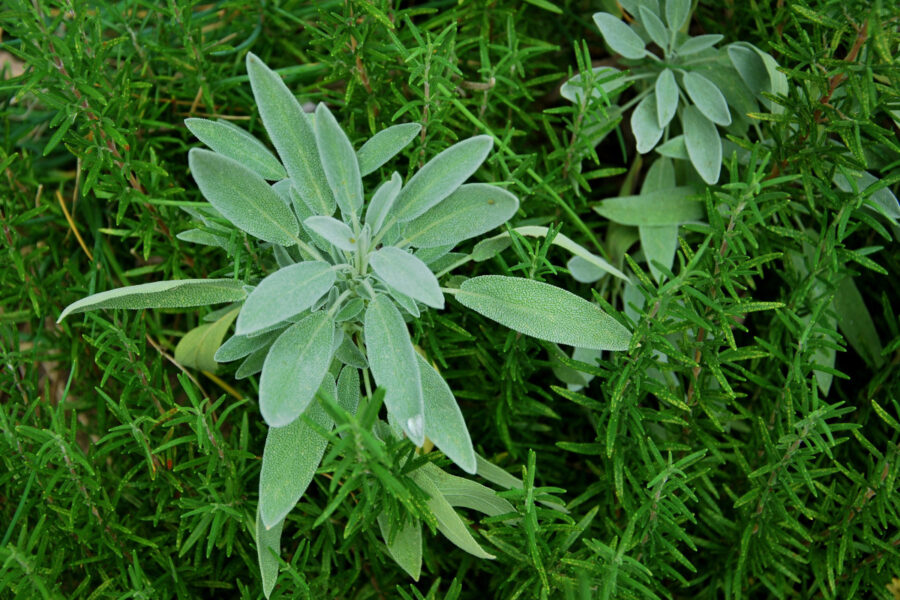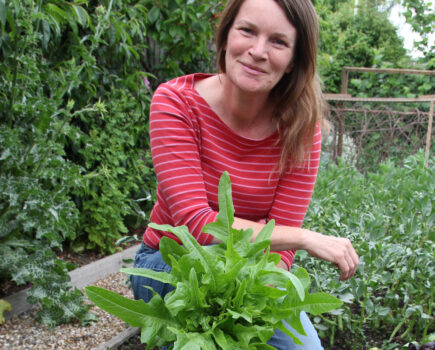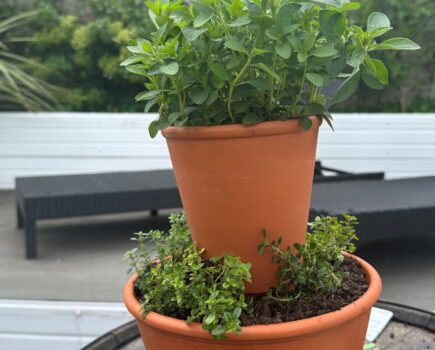Rosemary, sage and winter savory are among the woody herbs that offer scent, colour and shape. Expert Barbara Segall shares their attractions.
Starting with Rosemary (Salvia rosmarinus formerly Rosmarinus officinalis)
It is one of those aromatic herbs that remind you of hot, sun-baked Provencal hills and markets. Its small, spiky green shoots are packed with aromatic oils that are released when you crush, or brush against them in the garden. Rosmarinus means dew of the sea and it is a plant with a long history, used to flavour food, in herbal cosmetics and remedies.
Rosemary is an evergreen shrub which comes in many shapes and sizes: there are bushy forms, plants that grow low to the ground or are prostrate, and then there is the tall and erect, ‘Miss Jessopp’s’ Upright’, which can be used as a hedging plant.
Not only does rosemary have such varying shapes and sizes, but its flowers can be white, blue or pink-mauve and there are foliage forms with gold and silver markings.
Like many drought-tolerant aromatic herbs, rosemary will survive winters well if its roots are in well-drained soil. In cold, water-logged ground it will not do well and will need protection in exposed sites. It needs full sun to bring out the best in its aromatic foliage and for good flower production.
Rosemary flowers from late spring through to summer, carrying its small but abundant blooms close to its stems. The flowers are arranged in whorls around the square stems, typical of the labiate family that rosemary belongs to. It is a great bee attractor, especially welcome as it flowers very early in spring. Recently rosemary beetles (Chrysolina americana) that look like jewels have become a problem on established and young plants. The larvae and adults eat the foliage and flowers of rosemary and sage, among other aromatic plants. Most plants will survive the attacks and the best and safest way for other insects is to pick the beetles off manually or shake them off onto paper placed below the plants.
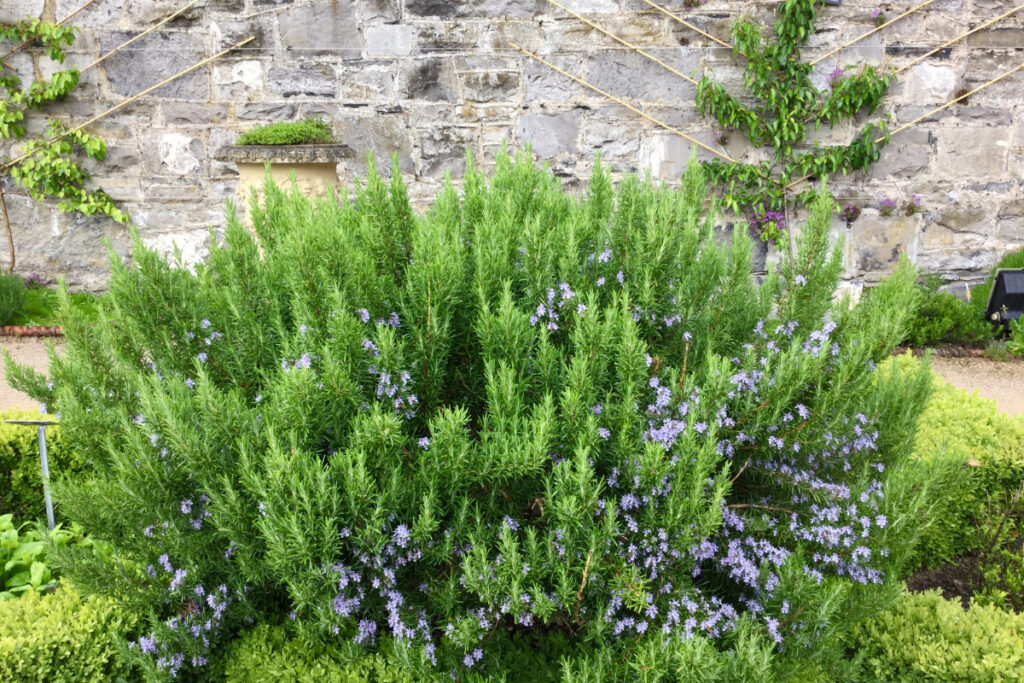
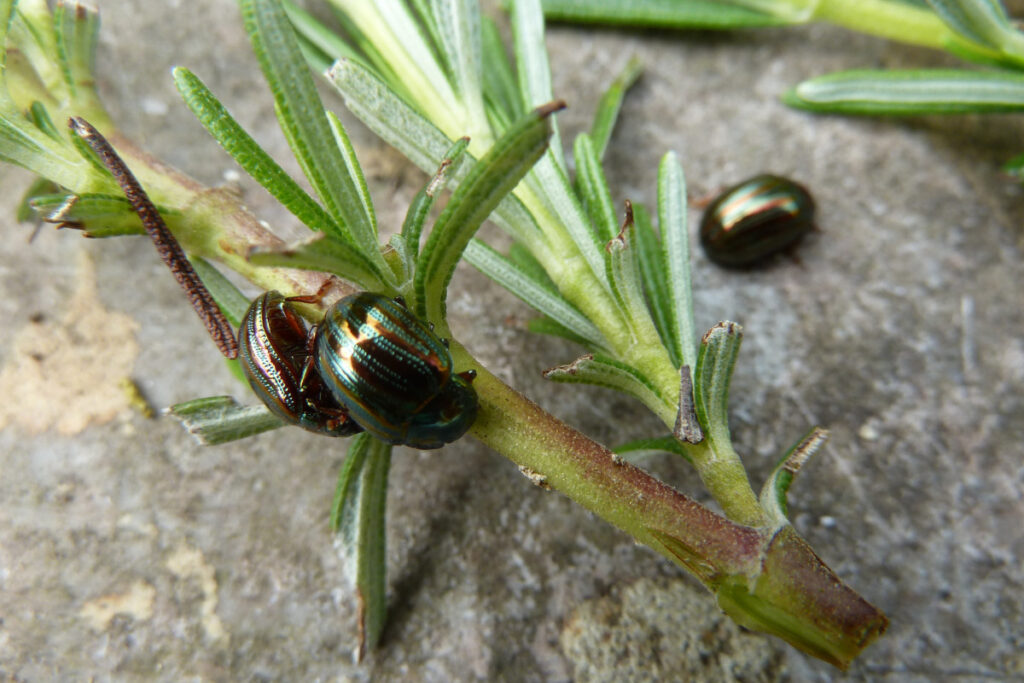
For the bluest of blue flowers choose ‘Sudbury Blue’ (which was found as a sport at Suffolk Herbs originally close to where I live) or ‘Seven Seas. ‘Majorca Pink’ and ‘Roseus’ offer delicate mauve-pink flowers and the white form Salvia rosmarinifolius var albiflorus suits a monochromatic planting scheme. The silver variegated form, recently rediscovered, is S. rosmarinifolius ‘Silver-Spires’.
Rosemary has many uses in the herb garden, as well as in the general ornamental garden. I love growing it in the border, in containers and trailing over low walls. If you have the space, grow it as a sprawling bush and let it make its own shape. You will always need to cut out any branches that are damaged or die back in spring. If the plants get too woody and the foliage becomes sparse, replace them with new bushes.
In smaller spaces you can grow rosemary in topiarised shapes. Standards, with bare stems and round mop-heads of foliage, are very popular and make a good height focus in the mostly low-growing herb garden. They are also fun to grow indoors and use as table decorations during the festive season. Outdoors in containers they will need careful watering and you may need to move them into sheltered sites in winter, as their roots in the container are more exposed to cold than those of plants growing in the ground.
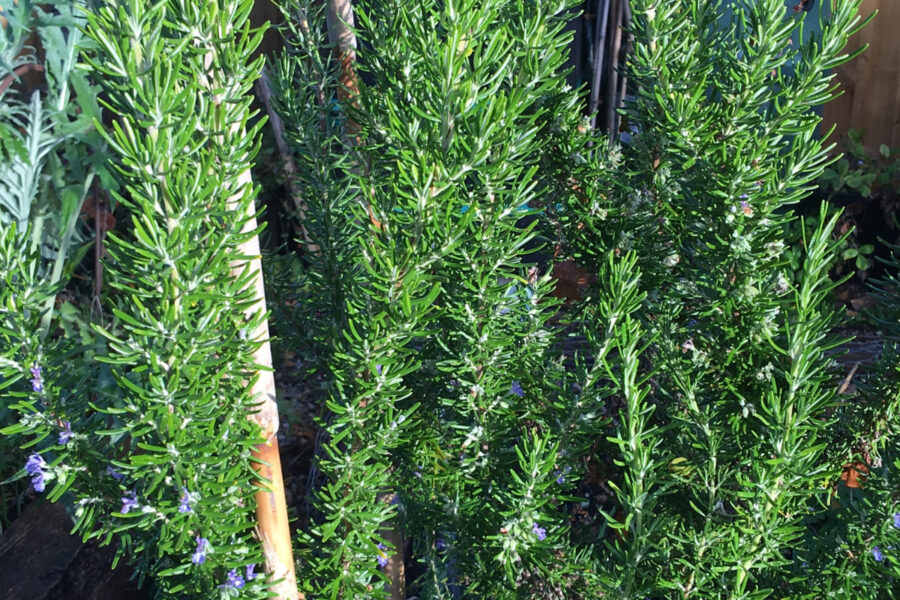
Trailing or prostrate rosemary suits raised beds where its branches can flow over the edges.
Using rosemary in the kitchen
Pick sprigs when you need them through the year for use in salads, with meat dishes especially lamb and to make herb jellies, butters and to flavour desserts. Roasted with potatoes it is sensational. The first time I remember eating anything flavoured with rosemary was a wonderful dish of spaghetti which had been cooked in water with sprigs of rosemary. The taste was unforgettable.
There is a relatively new rosemary called ‘Green Ginger’ which in addition to the aromatic rosemary scents in the foliage has a distinct ginger note. It is useful in baking and I particularly like using it for flavouring when I poach apples and pears
When you use rosemary in cooking, strip the leaves off the woody stems – unless you are using it to make kebab sticks, in which case you use the woody bits as the skewers, with foliage attached, as far as possible. Rosemary is often used on barbecues coals to add an aromatic flavour through smoke to the meat, poultry or fish that is being cooked.
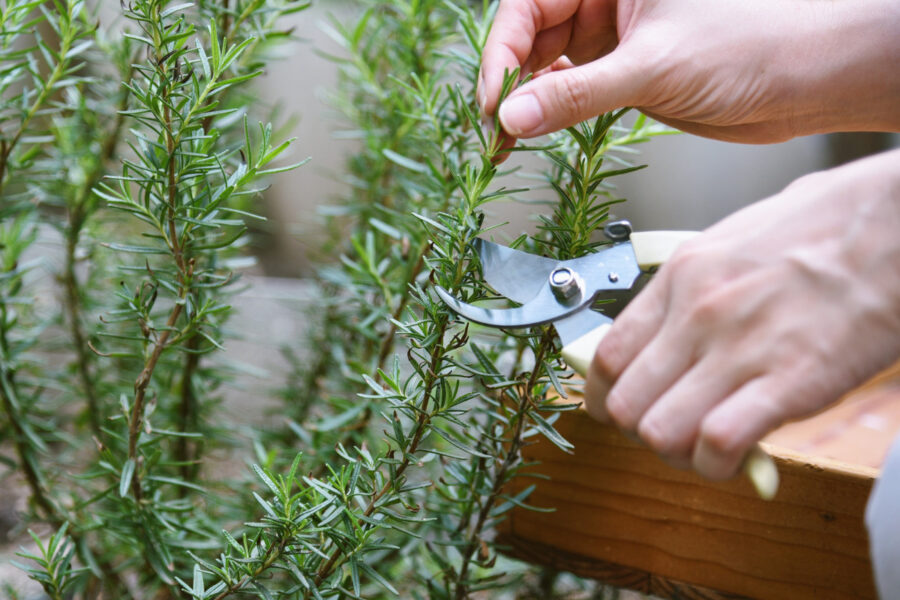
………………..
Sensational Sage (Salvia officinalis)
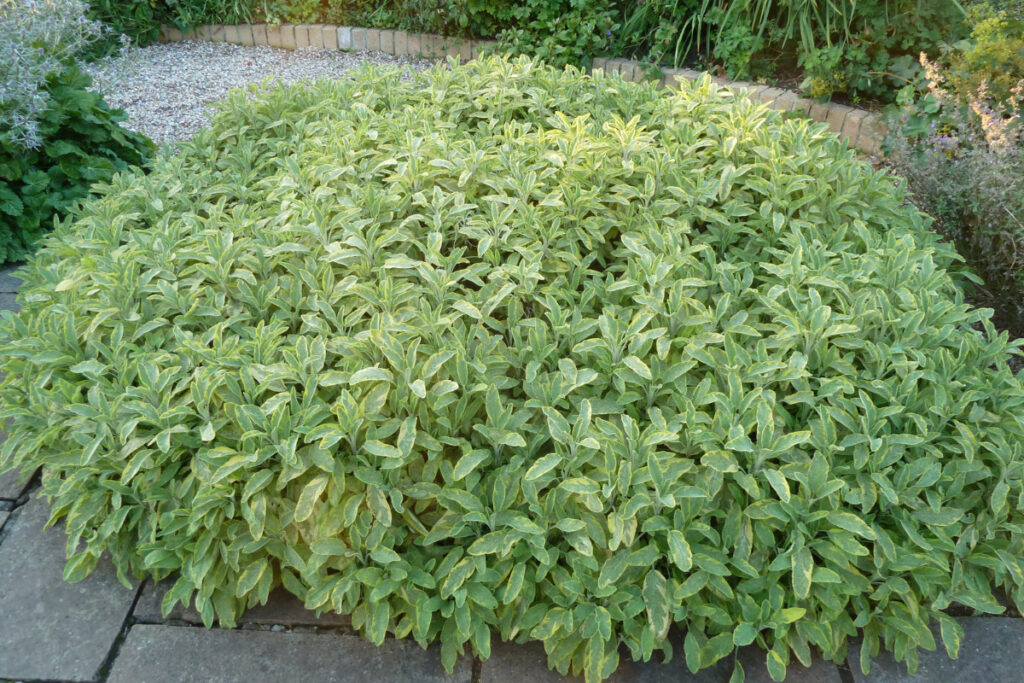
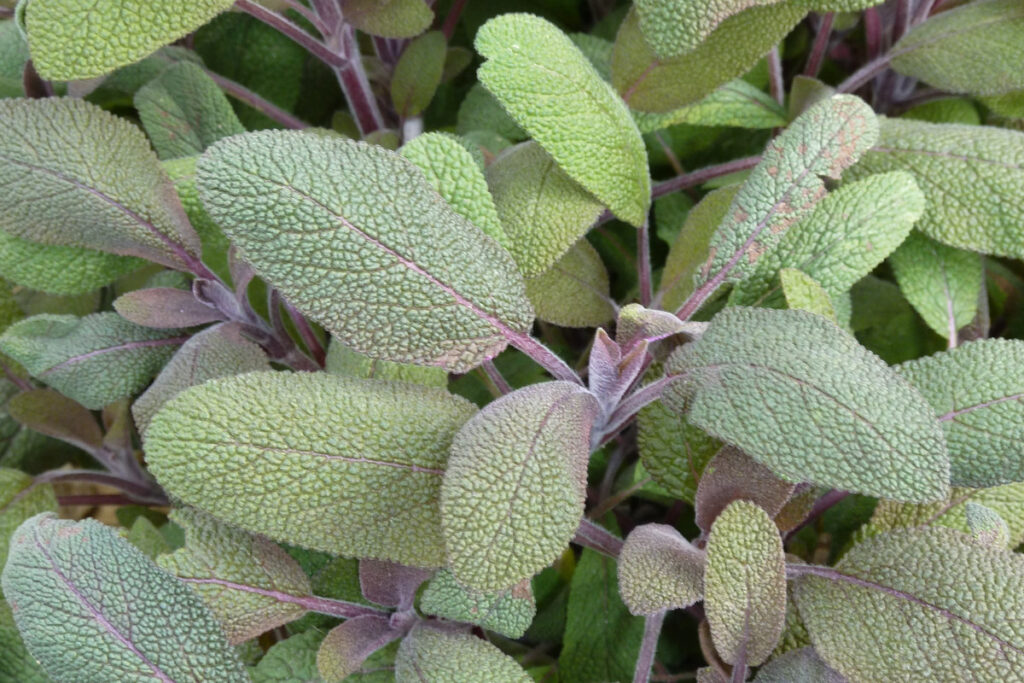
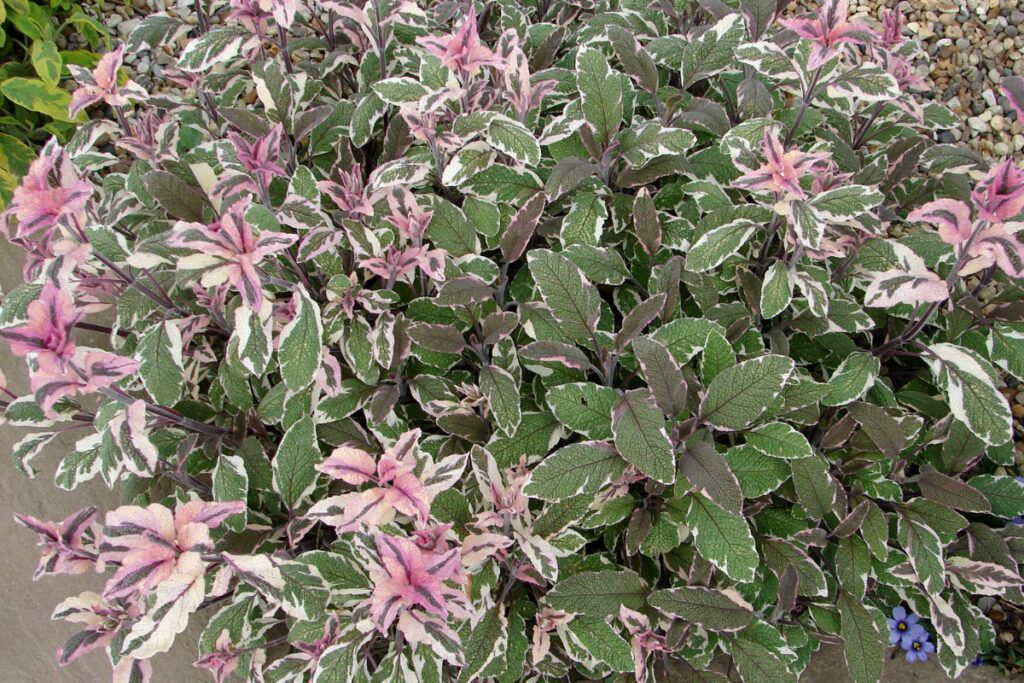
This is a useful, ornamental and highly aromatic herb – good in the kitchen and in the garden. Sage plants have a variable height and spread depending on species from 90cm and 70cm spread.
There are several different leaf colourways making it an extremely versatile garden plant. Purple, golden and tri-coloured sages offer great ornament plants and they do as well in the ground as in containers, especially on a sunny patio or verandah. The fruity, pineapple-scented S. elegans (pineapple sage) needs to be overwintered in frost-free conditions.
I usually take cuttings in spring and summer and replace plants every few years as they become too woody. They thrive in a light free-draining soil in full sun. In the garden if I leave them to flower in summer the purple or white flowers are bee magnets.
Sage in the kitchen
The leaves have a powerful, almost camphor-like aroma so they are best used sparingly. I use the chopped leaves to make stuffing for poultry dishes, and also to accompany meat such as pork for stuffing with prunes or onions, or with apples to make a sauce that says ‘autumn harvest’ to me. I also use it with pumpkin in a soup or with squash in roasted dishes. But best of all I like dipping the leaves in a light tempura batter and serving them as a first course snack (see panel).
…………
Winter or Mountain Savory (Satureja montana)
This has to be one of the secret highlights of the herb garden. It is a semi-evergreen hardy perennial that grows to a height of 30cm (12in), with a spread of 30cm (12in) or more depending on conditions. In my garden it has reached at least 50cm (20in) in a decade.
The leaves are narrow and lance-shaped, and its white flowers that are sometimes tinged pink appear in summer and flower through the autumn. The plant is very aromatic. I trim it back in autumn so that there is some new growth to use over the winter. It can be used as an edge plant but will need to be trimmed to keep it from growing out of line, and it would suit a rockery. Winter savory does best in full sun and in well-drained but poor soil.
Take cuttings in spring or sow seed in early spring in a propagator or greenhouse. The seed will need light to germinate. If your soil is heavy and rich and you live in a high rainfall area, overwinter some plants in pots where watering can be kept to an absolute minimum.
…….
In the kitchen
Winter savory and the annual summer savory (Satureja hortensis) are both excellent substitutes for salt and pepper seasonings, so are useful in low-salt diets. I use them with beans, lentils and onions to make hot dishes that can either be mains or accompaniments.
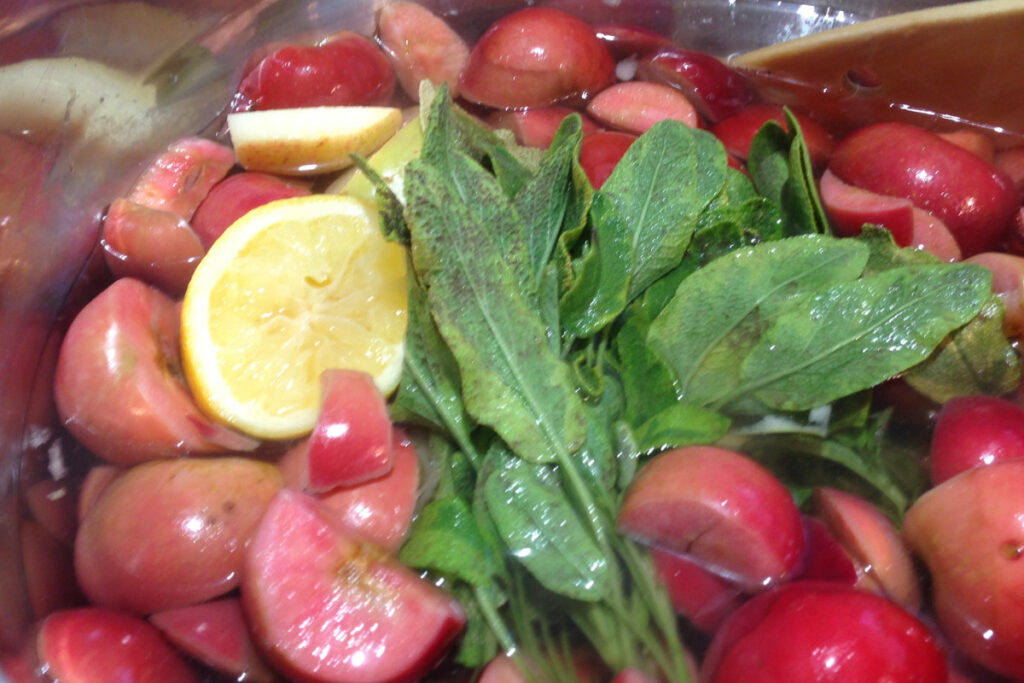
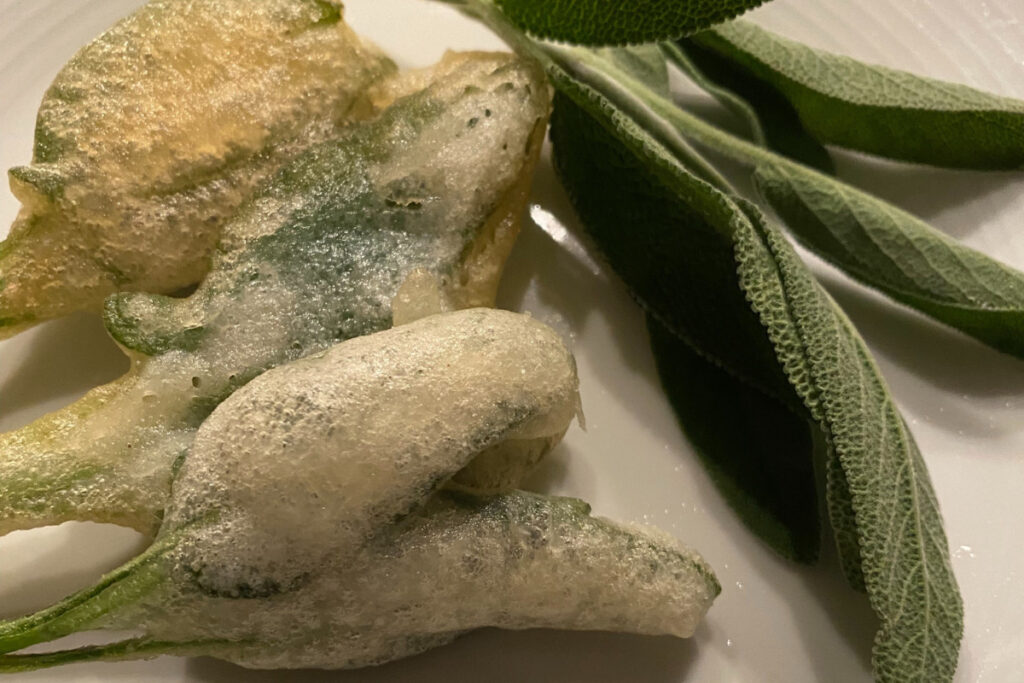
Making a tempura batter for sage leaves
I make a light, tempura-style batter with equal parts sifted flour and sparkling water or lager-type beer and season this well. Heat 5cm oil to about 190°C. Dip the leaves one at a time in the batter, drain off excess and fry for about 45 seconds on each side until light golden brown and crisp. Drain on kitchen paper and serve hot.
I often combine them with anchovies, capers, shaved Parmesan and olives to make a substantial and tasty starter.
Find more tips, advice and articles like this at the Amateur Gardening website. Subscribe to Amateur Gardening magazine now

